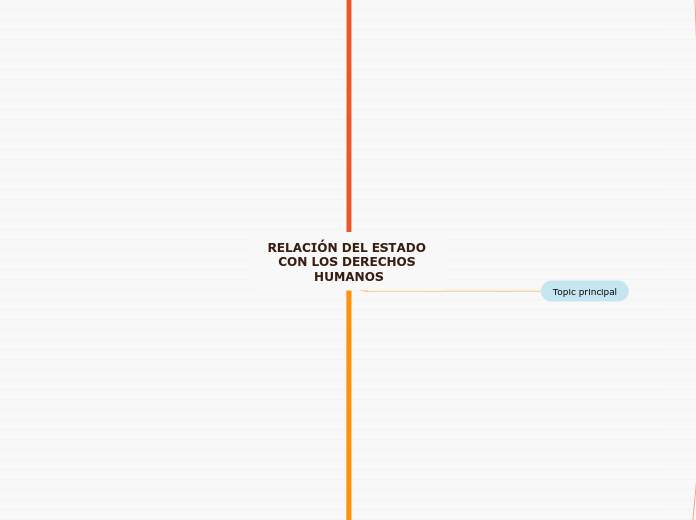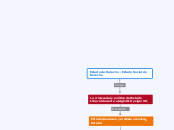RELACIÓN DEL ESTADO CON LOS DERECHOS HUMANOS
To name your story, you have to think about the overall message and what you want your audience to understand from the story. Also, make it relevant and easy to remember.
Conclusión
Los principios y obligaciones cumplen la promesa de la constante creación de derechos humanos, pues aun despues de alcanzados los minimos y los estandares exigibles, siempre permaneceran como una promesa a futuro, en este sentido los derechos humanos siempre seran los derechos por venir.
La obligación de garantizar y los principios de universalidad y progresividad
The ending of a story is essential. We all know that if the ending is weak, what happened before loses its importance. So make it unpredictable, but fair. A resolved ending answers all the questions and ties up any loose threads from the plot.
No regresividad
Indica que una vez logrado el avance en el disfrute de los derechos, el Estado no podrá, salvo en ciertas circunstancias, disminuir el nivel alcanzado. Disminuir su alcance significaria estar en una regresion prohibida.
Universalidad
Conlleva un proceso de contaminación, nutrición y de renovación de los derechos humanos producto de su propia expansión a diferentes culturas, ideas y manifestaciones de la opresiones. Debe servir como un marco conceptualde inclusión de culturas y de los mas desventajados.
Adjudicación del contenido mínimo esencial
This is the closure section of the story.
See examples of possible outcomes below:
- all problems have been solved
- it's clear how each one of your characters ends up
- your main character is transformed by the challenge
Se refiere a la obligación de hacer todo lo posible por optimizar el derecho a la supervivencia de los mas desventajados en la sociedad.
Try answering these questions in order for you to come up with a closure:
- Have all problems been solved?
- Is it clear what happens with all your characters in the story?
- Has the challenged transformed your main character?
- How do the characters feel in the end?
Se trata de verificar el funcionamiento de lo satisfecho y su progresión.
Son una clausula de optimizacion de los derechos, esto es, que el Estado no esta obligado a hacer mas de lo que sus recursos le permitan, pero debe ser capaz de mostrar y mostrar que no pudo hacer mas de lo que hizo dados esos recursos
Try answering these questions to come up with a closure:
- Have all the problems been solved?
- Is there a clear picture of what happens with each character in the story?
- Has the challenge transformed your main character?
- How do the characters feel in the end?
Principio de progresividad
This is the moment when the main character surpasses the last obstacle and finally faces their greatest challenge.
The climax usually follows one of these patterns:
- realization
- resolution
- choice
Type in your answer.
Implica tanto la gradualidad como progreso. La gradualidad se refiere a que la efectividad de los derechos no va a lograrse de una vez y para siempre, sino que se trata de un proceso que supone definir metas a corto, mediano y largo plazo. La progresividad requiere del diseño de planes para avanzar hacia el mejoramiento de las condiciones de los derechos mediante el cumplimiento de dichos planes.
Topic principal
Las obligaciones generales son el mapa que nos permite ubicar las conductas exigibles tanto respecto de los casos particulares como en relación con la adopción de medidas y legislación
The middle of the story is where you add layers of complications that will lead to the end. Reveal more about the character's journey. Did their personality go through changes? How did they overcome the challenges? And as you build up the story’s central conflict, make it more personal to that character. Also, from the middle act, you have to lead into the final act.
Obligación de promover
Tiene dos objetivos principales, por una parte que las personas conozcan sus derechos y mecanismos de defensa y, por otra , avanzar en la satisfacción del derecho, esto es ampliar su base de realización. Las obligaciones son conceptualizadas como conductas estatales y no como bienes transferibles.
Obligación de garantizar
There wouldn't be any tension and excitement in your story if there weren't any obstacles in your character's way.
Tiene por objeto realizar el derecho y asegurar para todos los derechos. Por ello requiere la remoción las restricciones a los derechos, así como la provisión de los recursos o facilitación de la actividades que aseguren que todos son sustantivamente iguales en cuanto a su habilidad para participar como ciudadanos plenos en una sociedad.
A story is nothing more than a character overcoming a series of difficulties to reach the desired goal. Obstacles usually create suspense and conflict. In overcoming obstacles, there is growth: weak becomes strong; hatred turns into love; sadness into happiness; wrong into right; lies into truth; or evil becomes good.
See a few examples below:
- stopping a meteor
- finding a killer
- finding love
Investigar, sancionar y reparar las violaciones a los derechos humanos
El ejercicio efectivo de los derechos implica, finalmente, la restitución de los derechos frente a una violación. Se requiere realizar una investigación y sancionar la conducta violatoria así como también evaluar la conducta a nivel constitucional.
Provisión de bienes
El Estado debe proveer a las personas con los recursos materiales necesarios para que logren disfrutar de los derechos. El objetivo es asegurar el acceso al derecho de aquellas personas que de otra forma no podrían obtenerlo.
Adoptar medidas
Se refiere a la creacion y adecuacion de la infraestructura legal e institucional de la que depende la realizacion de los derechos.
Calidad
Asegura que los medios y contenidos por los cuales se materializa un derecho tengan los requerimientos y propiedades aceptables para cumplir con esa función.
Aceptabilidad
Implica que el medio y los contenidos elegidos para materializar el ejercicio de un derecho sean admisibles por las personas a quienes estan dirigidos, lo que conlleva al reconocimiento de especificidades, la flexibilidad necesaria para que los medios de implementación de un derecho sean modificadosde acuerdo con las necesidades de ñps distintos grupos a los que van dirigidos en contextos sociales y culturas variados.
Accesibilidad
Se trata de asegurar que los medios por los cuales se materializa un derecho sean alcanzables a todas las personas sin discriminacion alguna.
Acceso a la información
Comprende el derecho de solicitar, recibir y difundir información e ideas relacionados con los derechos.
Accesibilidad económica (asequibilidad)
Constituye una proteccion frente a una posible carga desproporcionada que podrian implicar los derechos.
Accesibilidad Fisica
Como parte del goce de los derechos el Estado debe acercar los medios para su realización a las personas.
No discriminacion
Protección de los grupos en situacion de vulnerabilidad.
Disponibilidad
implica garantizar la suficiencia de los servicios, instalaciones, mecanismos. procedimientos, o cualquier otro medio por el cual se materializa un derecho para toda la población.
Obligación de proteger
Your character(s) need(s) motivation in order to solve the challenge(s).
Es una obligacion dirigida a los agentes estatales en el marco de sus respectivas funciones para prevenir las violaciones a derechos humanos cometidas por particulares, asi como crear el marco juridico y la maquinaria institucional necesaria para crear ese fin, Estamos frente a una conducta positiva del Estado, el cual debe desplegar multipls acciones a fin de proteger a las personas de las interferencias provenientes de sus propios agentes y particulares.
Why does your character need to confront this challenge? What does he/she expect to accomplish by solving it?
See a few examples:
- will marry in 3 days
- can fix the mistakes of the past
El accionar del Estado cuando una persona se encuentra en riesgo real e inminente de ver violados sus derechos por un particular.
La protección conlleva tanto una conducta de vigilancia hacia los particulares y los propios agentes estatales, como el establecimiento del aparato que permita llevar a cabo tal vigilancia y reaccionar ante los riesgos para prevenir violaciones.
Obligación de respetar
Each story has a main character and that character usually needs to solve a problem or challenge. The character's challenge is the one that creates tension throughout the story.
Constituye la obligacion mas inmediata y basica de los derechos humanos, en tanto implica no interferir con o poner en peligro los derechos. Se trata de una obligación tendiente a mantener el goce del derecho y su cumplimiento es inmediatamente exigible cualquiera que sea la naturaleza del derecho. Ninguno de los organos pertenecientes al Estado, en cualquiera de sus niveles e independientemente de sus funciones debe violentar los derechos humans, ni por sus acciones ni por sus omisiones.
In most stories, there are 3 challenges. The number 3 is a mystical number symbolizing completeness. Try to come up with interesting challenges with which your character needs to struggle.
See a few examples below:
- turns into a werewolf at night
- is sent back in time
Tienen la intención de buscar armonización
Con el reconocimiento de las obligaciones de respetar, proteger, garantizar y promover los derechos humanos, asi como de los principios de universalidad, indivisibilidad, interdependencia y progresividad en el art 1 CPEUM
In the beginning of the story (or the exposition), you will need to introduce the setting and characters. You might also want to introduce the main conflict. This part of the story is important because it gives the reader necessary background information and maybe even a first insight into a character’s personality.
Se establece un complejo sistema de interpretacion, aplicacion e implementacion de los derechos humanos dirigido a los poderes legislativos, ejecutivos y judiciales del pais.
Characters are essential to a good story. Usually, the protagonist(s) is/are the most affected by the plot. Introduce a character by focusing on their actions, interests, and occupation, as the physical appearance doesn't make a difference in most cases.
Se trata de un sistema que pone énfasis en los derechos pero que contiene un sofisticado mecanismo para el análisis y la implementación de los derechos y sus obligaciones a partir de ciertos principios que permiten mantener, realizar y avanzar el disfrute de los derechos.
Type in the name of your character.










